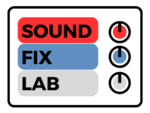In the world of music production, achieving pristine audio quality is essential. To accomplish this, understanding concepts like gain staging and signal-to-noise ratio (SNR) is crucial. In this article, we will explore the significance of gain staging and SNR, their impact on audio quality, and how they can be effectively managed in the music production process.
Gain Staging: Setting the Foundation
Gain staging refers to the process of carefully adjusting the gain levels at each stage of the audio signal chain. It ensures optimal signal-to-noise ratio, prevents distortion, and provides better control during mixing and mastering. Let’s delve into the key steps involved in gain staging:
- Starting with the Source: Begin by setting appropriate input levels during recording. This involves positioning microphones correctly and adjusting input gain to capture a strong, undistorted signal.
- Adjusting Preamp Gain: Set the gain of preamps in the signal chain to achieve an optimal level without clipping or excessive noise. Pay attention to level meters to maintain a healthy balance.
- Balancing Levels during Mixing: During the mixing process, adjust faders or volume controls for each track or instrument to create a balanced mix. This ensures that each element can be heard clearly without overpowering others.
- Using Plugins and Processors Wisely: When using plugins like compressors or EQs, be mindful of the gain changes they introduce. Adjust the input/output levels of plugins to maintain consistent gain staging throughout the processing chain.
Signal-to-Noise Ratio: Ensuring Audio Fidelity
Signal-to-noise ratio (SNR) quantifies the level of desired signal compared to the level of unwanted background noise in an audio signal. Let’s explore SNR in more depth:
- Understanding SNR: SNR is expressed in decibels (dB) and represents the difference between the level of the signal and the level of the noise. A higher SNR indicates a stronger, cleaner signal relative to the noise, while a lower SNR means the noise level is closer to or overpowering the desired signal.
- Importance of SNR in Audio Quality: Maintaining a good SNR is crucial for optimal audio quality. A higher SNR allows for a cleaner, more detailed sound reproduction, while a lower SNR can introduce audible noise and reduce audio clarity.
- The Relationship between Gain Staging and SNR: Gain staging and SNR are closely interconnected. Proper gain staging helps maintain a healthy SNR throughout the production process. By managing gain levels, you ensure that the desired signal remains strong relative to the noise floor.
Benefits of Effective Gain Staging and SNR Management:
By implementing proper gain staging and managing SNR, you can achieve the following benefits:
- Clean and Transparent Sound: Optimal gain staging ensures a clean and transparent sound reproduction, free from distortion and excessive noise.
- Enhanced Audio Fidelity: Maintaining a healthy SNR allows for a more accurate and detailed audio representation, preserving the fidelity of the original recording.
- Improved Mixing and Mastering: Proper gain staging provides better control during mixing and mastering, allowing you to achieve a balanced mix and make informed decisions.
Gain staging and signal-to-noise ratio play vital roles in music production, regardless of whether you are working with digital or analog gear. By understanding and implementing effective gain staging techniques, you can achieve optimal audio quality, prevent distortion, and maintain a clean and transparent sound throughout the production process. Managing the signal-to-noise ratio ensures a high-fidelity representation of your music, resulting in an enjoyable listening experience for your audience.

